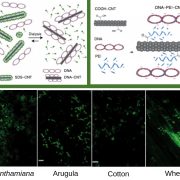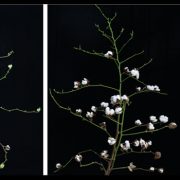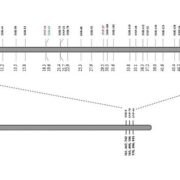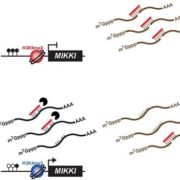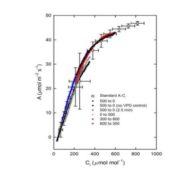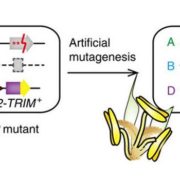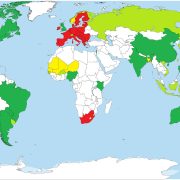Genetics of rose petal fragrance: RhPAAS and 2-phenylethanol (Plant Phys)
 In Romeo and Juliet, Shakespeare wrote, “that which we call a rose, by any other word would smell as sweet,” but the truth is, most roses today don’t smell as sweet as the ones Shakespeare described; selection for prolonged cut flower life has largely been at the expense of fragrance. Roccia seek to redress this loss by exploring the genetic basis of rose fragrance. By examining a segregating population of two diploid rose cultivars, they identified several scent-associated loci including the PHENYLACETALDEHYDE SYNTHASE gene (RhPAAS), involved in the production of the volatile compound 2-phenylethanol. The allele correlated with the greater scent production is more highly expressed than corresponding alleles in less scented flowers. Interestingly the gene expression is highest early in flower development, before scent levels are elevated. The authors found that early in development 2-phenylethanol is conjugated and stored, and then released to provide fragrance in the mature flower. These data will be valuable as breeders work to restore rose’s sweet smell. (Summary by Mary Williams) Plant Physiol. 10.1104/pp.18.01468
In Romeo and Juliet, Shakespeare wrote, “that which we call a rose, by any other word would smell as sweet,” but the truth is, most roses today don’t smell as sweet as the ones Shakespeare described; selection for prolonged cut flower life has largely been at the expense of fragrance. Roccia seek to redress this loss by exploring the genetic basis of rose fragrance. By examining a segregating population of two diploid rose cultivars, they identified several scent-associated loci including the PHENYLACETALDEHYDE SYNTHASE gene (RhPAAS), involved in the production of the volatile compound 2-phenylethanol. The allele correlated with the greater scent production is more highly expressed than corresponding alleles in less scented flowers. Interestingly the gene expression is highest early in flower development, before scent levels are elevated. The authors found that early in development 2-phenylethanol is conjugated and stored, and then released to provide fragrance in the mature flower. These data will be valuable as breeders work to restore rose’s sweet smell. (Summary by Mary Williams) Plant Physiol. 10.1104/pp.18.01468



